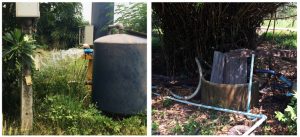Highlight Activities: Microbial community structure in aquifers associated with arsenic: analysis of 16S rRNA and arsenite oxidase genes
Microbial community structure in aquifers associated with arsenic: analysis of 16S rRNA and arsenite oxidase genes
The microbiomes of deep and shallow aquifers located in an agricultural area, impacted by an old tin mine, were explored to understand spatial variation in microbial community structures and identify environmental factors influencing microbial distribution patterns through the analysis of 16S rRNA and aioA genes. Although Proteobacteria, Cyanobacteria, Actinobacteria, Patescibacteria, Bacteroidetes, and Epsilonbacteraeota were widespread across the analyzed aquifers, the dominant taxa found in each aquifer were unique. The co-dominance of Burkholderiaceae and Gallionellaceae potentially controlled arsenic immobilization in the aquifers. Analysis of the aioA gene suggested that arsenite-oxidizing bacteria phylogenetically associated with Alpha-, Beta-, and Gamma proteobacteria were present at low abundance (0.85 to 37.13%) and were more prevalent in shallow aquifers and surface water. The concentrations of dissolved oxygen and total phosphorus significantly governed the microbiomes analyzed in this study, while the combination of NO3–-N concentration and oxidation-reduction potential significantly influenced the diversity and abundance of arsenite-oxidizing bacteria in the aquifers. The knowledge of microbial community structures and functions in relation to deep and shallow aquifers is required for further development of sustainable aquifer management.
ข้อมูลเพิ่มเติม
Sonthiphand P, Rattanaroongrot P, Mek-yong K, Kusonmano K, Rangsiwutisak C, Uthaipaisanwong P, Chotpantarat S, Termsaithong T (2021) Microbial community structure in aquifers associated with arsenic: analysis of 16S rRNA and arsenite oxidase genes. PeerJ 9:e10653 https://doi.org/10.7717/peerj.10653
ผลงานที่ตีพิมพ์มีความเชื่อมโยงกับเป้าหมาย SDGs เป้าหมายที่ 6: สร้างหลักประกันเรื่องน้ำและการสุขาภิบาลให้มีการจัดการอย่างยั่งยืน และมีสภาพพร้อมใช้สำหรับทุกคน หัวข้อย่อยที่ 6.3 ปรับปรุงคุณภาพน้ำ โดยการลดมลพิษ ขจัดการทิ้งขยะและลดการปล่อยสารเคมีอันตรายและวัสถุอันตราย ลดสัดส่วนน้ำเสียที่ไม่ผ่านกระบวนการลงครึ่งหนึ่ง และเพิ่มการนำกลับมาใช้ใหม่และการใช้ซ้ำที่ปลอดภัยอย่างยั่งยืนทั่วโลก ภายในปี 2573


